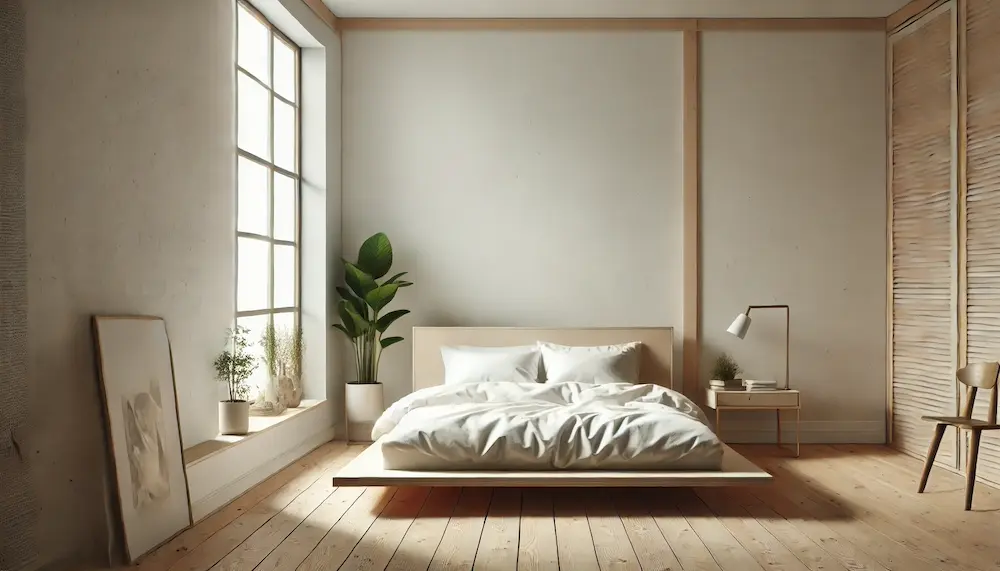A minimalist bedroom embodies the principle of “less is more,” focusing on simplicity, functionality, and tranquility. This design approach creates a serene environment conducive to rest and relaxation.
History and Origins of Minimalist Design
Minimalism emerged as an art movement in the 1960s, emphasizing simplicity and the elimination of unnecessary elements. Influenced by earlier movements like De Stijl and Bauhaus, it extended into architecture and interior design, promoting functional forms and open spaces. Japanese design principles, particularly the Zen philosophy of simplicity and the concept of ‘Ma’ (space), have also significantly shaped minimalist aesthetics.
Key Features of a Minimalist Bedroom
- Simplicity and Functionality: Every item serves a purpose, eliminating superfluous decorations. Furniture pieces are streamlined with clean lines and geometric shapes.
- Neutral Color Palette: Shades like white, gray, beige, or soft earth tones create a calm and cohesive atmosphere.
- Natural Materials: Incorporating wood, stone, and natural fibers adds warmth and texture, enhancing the room’s organic feel.
- Clutter-Free Space: Emphasizing open areas by minimizing furniture and decor allows for easy movement and a sense of openness.
- Natural Light: Maximizing natural light through unobstructed windows and sheer curtains enhances the room’s brightness and openness.
Applications of Minimalist Bedroom Design
Minimalist bedrooms are versatile and can be adapted to various settings:
- Urban Apartments: Optimizing limited space by reducing clutter and using multifunctional furniture.
- Modern Homes: Creating a cohesive aesthetic that aligns with contemporary design principles.
- Wellness Retreats: Providing serene environments that promote relaxation and mindfulness.
Considerations When Designing a Minimalist Bedroom
- Quality Over Quantity: Invest in high-quality, functional pieces that offer durability and comfort.
- Personal Touches: Incorporate meaningful items or artwork to add character without overwhelming the space.
- Storage Solutions: Utilize hidden storage to maintain a clutter-free environment, such as under-bed drawers or built-in wardrobes.
- Balance and Harmony: Ensure that the room’s elements are balanced, creating a harmonious and inviting atmosphere.
Conclusion
Designing a minimalist bedroom involves thoughtful selection of functional and aesthetically pleasing elements to create a tranquil and clutter-free space. By focusing on simplicity, natural materials, and intentional design, a minimalist bedroom serves as a peaceful retreat that reflects both modern design principles and personal comfort.
